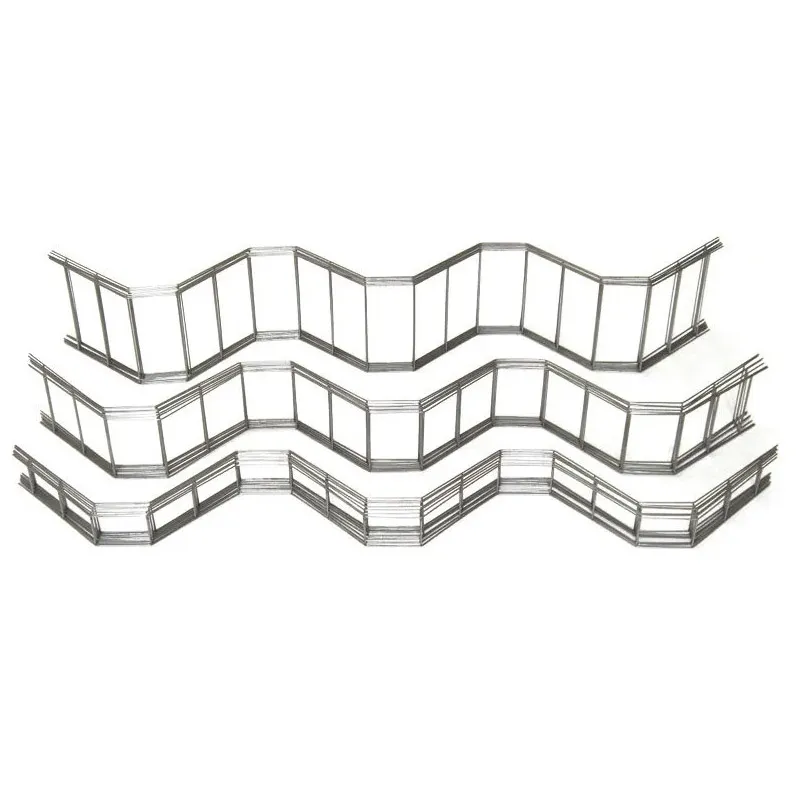
- Mobile Phone
- +8613931874955
- sales@cntcmetal.com
Estimating Costs for Field Fencing Installation and Maintenance
Understanding Field Fencing Costs
Fencing is an essential aspect of land management, particularly for farmers and landowners who need to protect their fields from intrusions and grazing animals. The cost of field fencing can vary widely based on several factors, including materials, labor, terrain, and the overall purpose of the fence. This article aims to provide an in-depth understanding of what to consider when calculating field fencing costs.
Materials
The primary factor influencing fencing costs is the type of material chosen for the fence. Common materials include
1. Barbed Wire This is often the most economical choice for basic fencing needs. Barbed wire fences are lightweight, easy to install, and effective for keeping animals in or out. However, they may not be suitable for all types of livestock, as some animals can injure themselves on the barbs.
2. High-Tensile Wire This option is more durable than barbed wire and can withstand greater tension, making it suitable for larger areas and more aggressive animals. While the initial costs might be higher, high-tensile wire can be more cost-effective in the long run due to its longevity.
3. Wood Wooden fencing provides an aesthetically pleasing option and is commonly used in residential areas and farms. However, wood is susceptible to rot, pests, and the elements, leading to higher maintenance costs over time.
4. Vinyl or Composite These materials offer durability and low maintenance, but they come at a premium price. Vinyl fencing is resistant to the weather and does not require painting or staining, making it a long-term investment.
5. Electric Fencing This type of fence is often used to manage livestock movement. While installation costs are generally higher, electric fencing can be a very effective deterrent for animals and is usually less expensive to maintain.
Labor Costs
field fencing cost

In addition to materials, labor costs also significantly impact the total fencing cost. Installation can often be performed by the landowner if they have the necessary skills and tools. However, hiring professional contractors will lead to higher costs due to labor charges. Depending on the fence type, the complexity of the installation process, and the region, labor costs can range from $2 to $5 per linear foot.
Terrain Considerations
Field terrain should not be overlooked when budgeting for fencing. Rocky or uneven ground can complicate the installation process and require additional resources such as post anchors, additional labor, or even special equipment. Conversely, flat and clear land will make the project easier and faster, potentially lowering labor costs.
Planning and Permits
Before installation, it’s crucial to plan the layout of the fence carefully. This involves surveying the land and determining the precise location, which could incur additional costs if legal surveys are required. In some regions, a permit may also be needed to erect a fence, which should be factored into the overall budget.
Maintenance Costs
Once the fence is installed, ongoing maintenance is essential to ensure its longevity. Regular inspections, repairs, and possible replacements of worn-out parts can add to the overall cost of field fencing. For example, wood fences may require annual staining or treatment, while wire fences might need occasional tightening or replacement of sections.
Conclusion
Investing in field fencing is a significant decision that involves careful consideration of various factors. Material choice, labor costs, terrain, and long-term maintenance all play crucial roles in determining the overall expenditure. By thoroughly assessing these elements, landowners can effectively budget for their fencing needs, ensuring their fields remain secure and functional for years to come. Whether one opts for affordability or longevity, understanding the associated costs will ultimately pave the way for better decision-making in land management.
share:
-
Wall Ties for Concrete: Invisible Guardians of Building Structural StabilityNewsAug.08,2025
-
Timber Frame Wall Ties: Stable Bonds for Load TransmissionNewsAug.08,2025
-
Stainless Steel Woven Wire Mesh: A versatile material from boundary protection to functional supportNewsAug.08,2025
-
Powder Coat Coil Springs: Creating peace of mind and reliability with sturdy protectionNewsAug.08,2025
-
Floor Standing Sign Holder: A Powerful Assistant for Flexible DisplayNewsAug.08,2025
-
Binding Iron Wire: An Invisible Bond for Building StabilityNewsAug.08,2025
-
Yard Sign Stakes: Reliable Guardians of Outdoor SignsNewsAug.04,2025



















